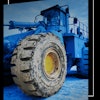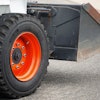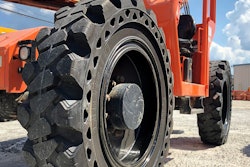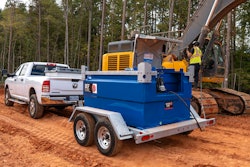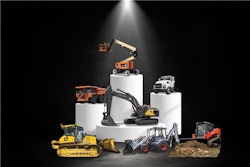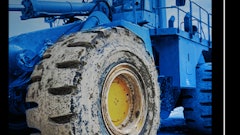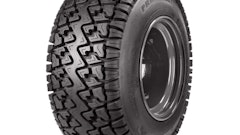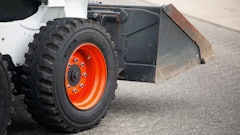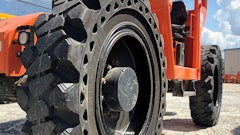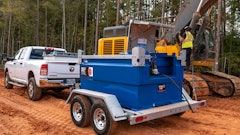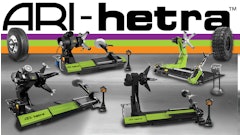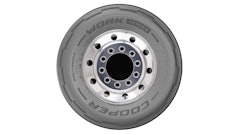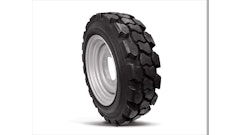
In compact equipment operations, tire selection is more than a line item — it’s a strategic decision with wide-reaching financial implications. While pneumatic tires may appear more cost-effective upfront, solid tires consistently deliver greater value over the equipment’s service life. For fleet managers and business owners focused on maximizing uptime, minimizing unplanned maintenance, and improving bottom-line performance, solid tires present a strong return on investment. Let’s crunch the numbers.
Upfront Cost vs. Life Cycle Value
Solid tires typically cost two to three times more than pneumatic tires — often ranging from $800 to $1,200 per tire compared to $250 to $500 for a standard pneumatic. At face value, that’s a significant difference. But life cycle costs tell a different story.
In heavy-use environments like demolition, forestry or construction debris fields, pneumatic tires may need replacement after just 500 to 1,000 hours of operation. Solid tires, by contrast, can last up to 3,000 to 4,000 hours. That kind of longevity often eliminates the need for multiple replacement cycles, making the initial investment much more economical in the long run.
Across a fleet of 10 skid steers operating on rugged jobsites, annual pneumatic tire replacements could easily reach $48,000 to $60,000. Switching to solid tires, with a three-to-four-times longer lifespan, can reduce those costs by over 50% per year — even after factoring in the higher upfront price.
Minimizing Downtime, Maximizing Productivity
A flat tire doesn't just slow one machine — it can halt an entire operation. Between service delays, rescheduled work and crew downtime, a single failure can cost hundreds or even thousands in lost productivity. Multiply that across a fleet, and the financial impact becomes impossible to ignore.

Solid tires eliminate flats altogether. Their puncture-proof design provides peace of mind in high-risk environments where rebar, nails, stumps and scrap metal are common. Contractors can complete jobs faster and avoid the productivity gaps that come from unexpected tire repairs or replacements.
It’s no surprise that rental fleets were early adopters of solid tires. Reducing turnaround time between customers and virtually eliminating tire damage calls are just smart business moves. For in-house fleets, the benefit is the same: less risk, less downtime and more hours logged where it counts — on the job.
Reducing Service Maintenance Costs
Tire-related service calls are a hidden expense that adds up fast. Replacing a pneumatic tire in the field often costs $200 to $400 per incident, not including the lost time waiting for support or pulling a machine off a job. With solid tires, that expense is virtually eliminated.
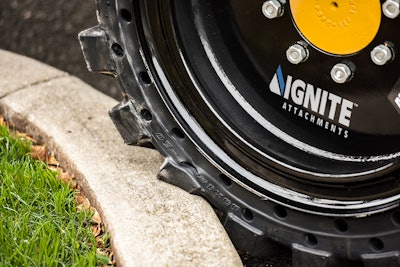
There’s also the daily labor savings. Pneumatic tires require constant air pressure checks and visual inspections for sidewall damage — especially critical when machines are running on debris-prone surfaces. Solid tires remove that checklist entirely. This helps streamline maintenance operations and reduces the chances of equipment being taken out of service unexpectedly.
The cumulative effect is a leaner, more predictable maintenance schedule and fewer surprise costs cutting into profit margins.
Better Load Ratings, Better Safety
Solid tires often come with a higher load rating than comparable pneumatic models — sometimes 20% to 40% more. That added strength increases carrying capacity and helps stabilize equipment under heavy loads. With no risk of blowouts or slow leaks, there’s less chance of unexpected tire failure leading to instability or tipping hazards.
For businesses managing jobsite risk and operator safety, the added reliability of solid tires is a measurable advantage. It also helps reduce exposure to liability tied to tire-related incidents and may contribute to lower insurance claims or premiums over time.
The ROI Adds Up
More fleet managers are recognizing the long-term value of solid tires, and adoption is growing steadily across construction, demolition and landscaping sectors. The trend mirrors the shift toward investing in long-life components that extend equipment uptime and reduce operational complexity.
What once may have seemed like a niche product is quickly becoming a go-to option for professionals who want to get the most from their machines. The business case has grown stronger with every season — and with every flat avoided.
Consider a conservative scenario: A pneumatic skid steer tire costs $400 and is replaced twice annually. That’s $3,200 per year per machine. A comparable solid tire might cost $1,000 and last three to four years, bringing the cost down to $1,000 to $1,333 annually.
Over four years:
Pneumatic tires = $12,800
Solid tires = $4,000 to $5,300
Savings = $7,500+ per machine
For a 20-machine fleet, that’s more than $150,000 saved — without accounting for downtime, labor or productivity loss.
 Ignite Attachments
Ignite Attachments
A Smarter Tire Strategy
For business owners and fleet managers, solid tires are more than a rugged alternative — they’re a strategic investment. With longer service life, fewer interruptions, reduced service costs and improved safety, they deliver the kind of returns that compound year after year.
When you're evaluating tire options for your fleet, don’t just consider the sticker price. Weigh the full cost of ownership, including replacement cycles, jobsite productivity and maintenance demands. Solid tires offer a reliable path to greater uptime and operational efficiency — rolling out better performance for every dollar spent.

